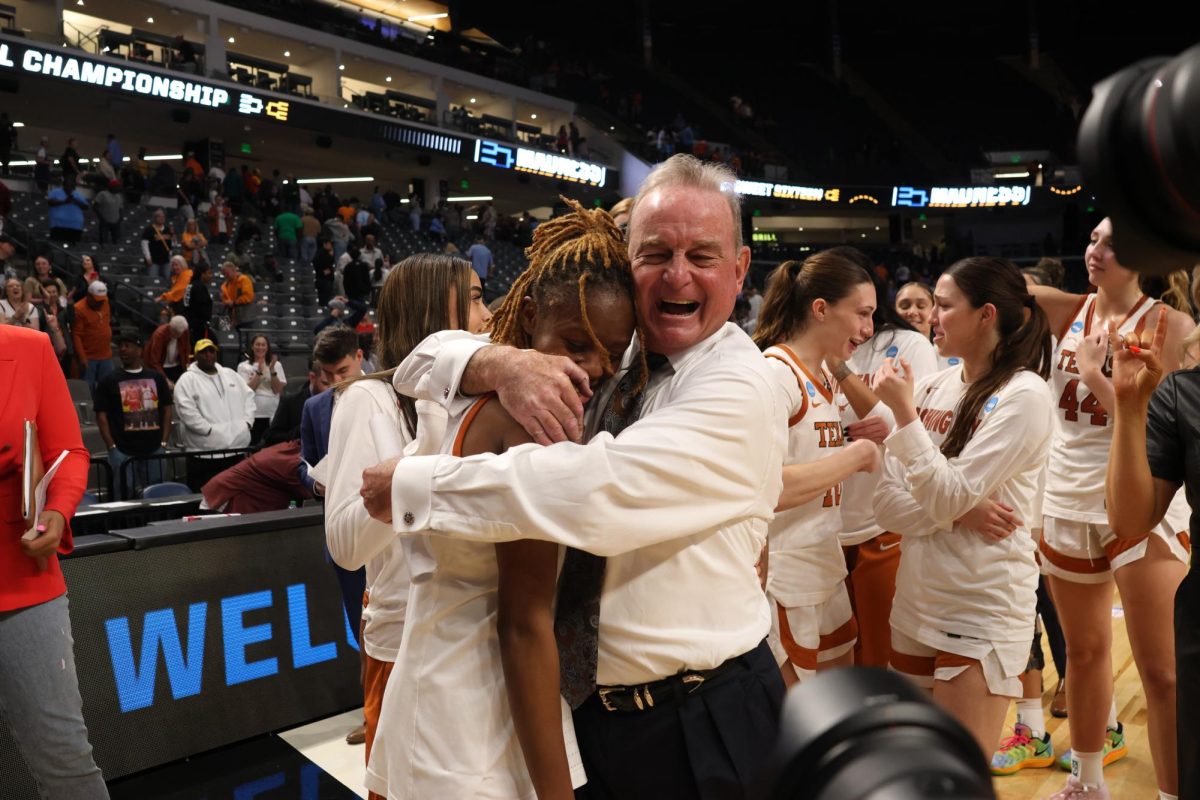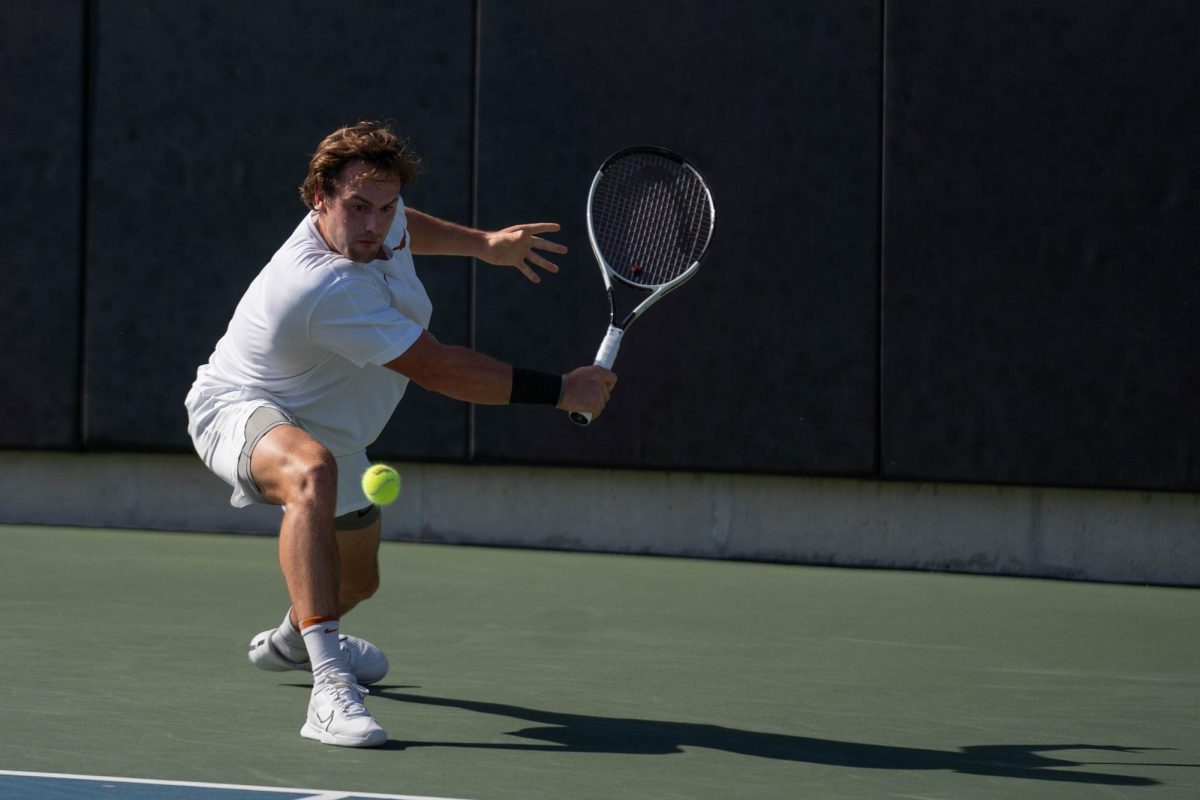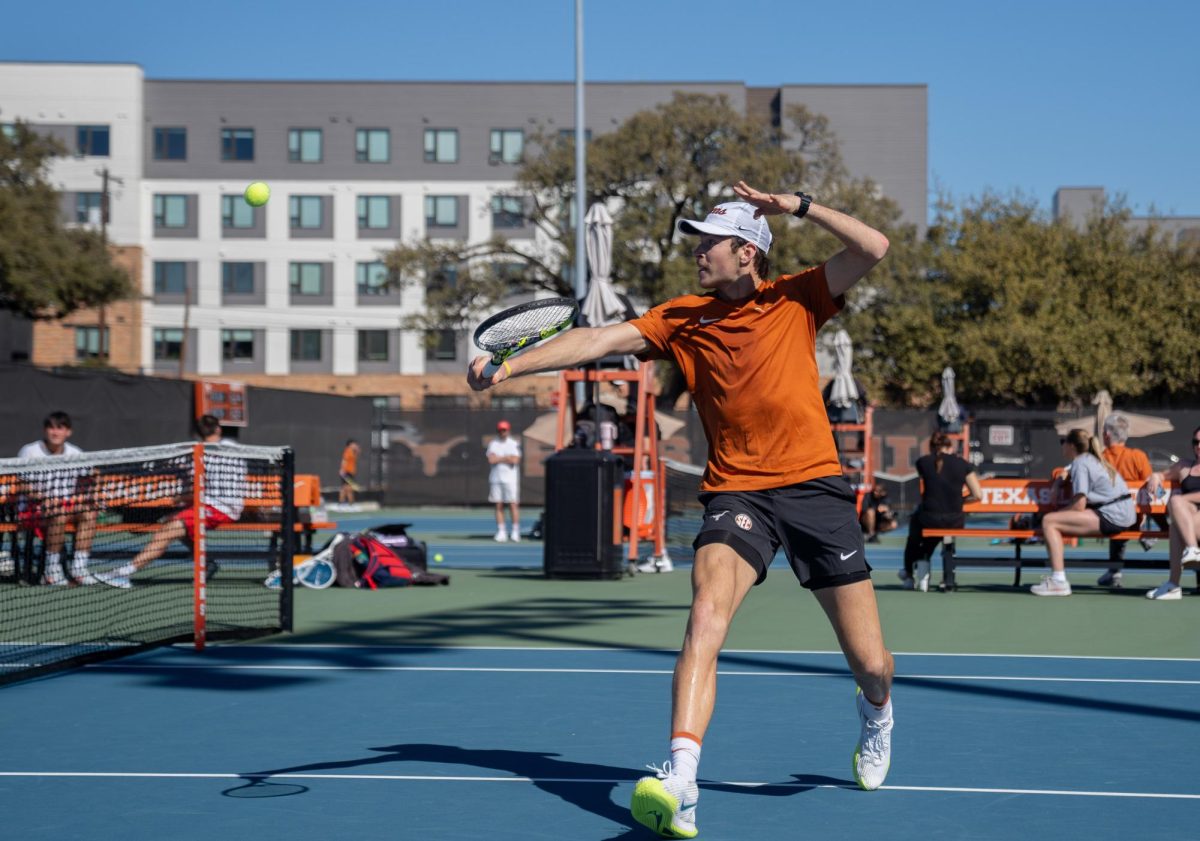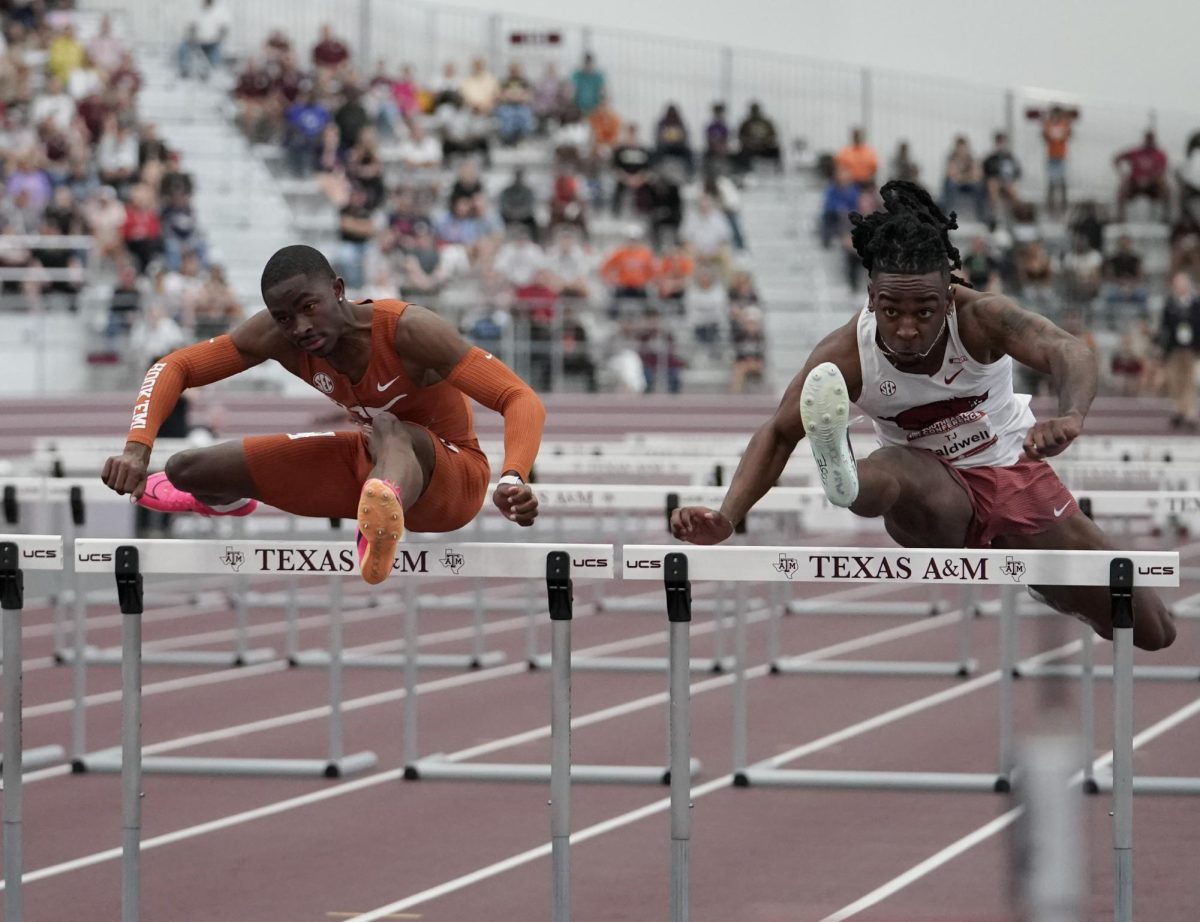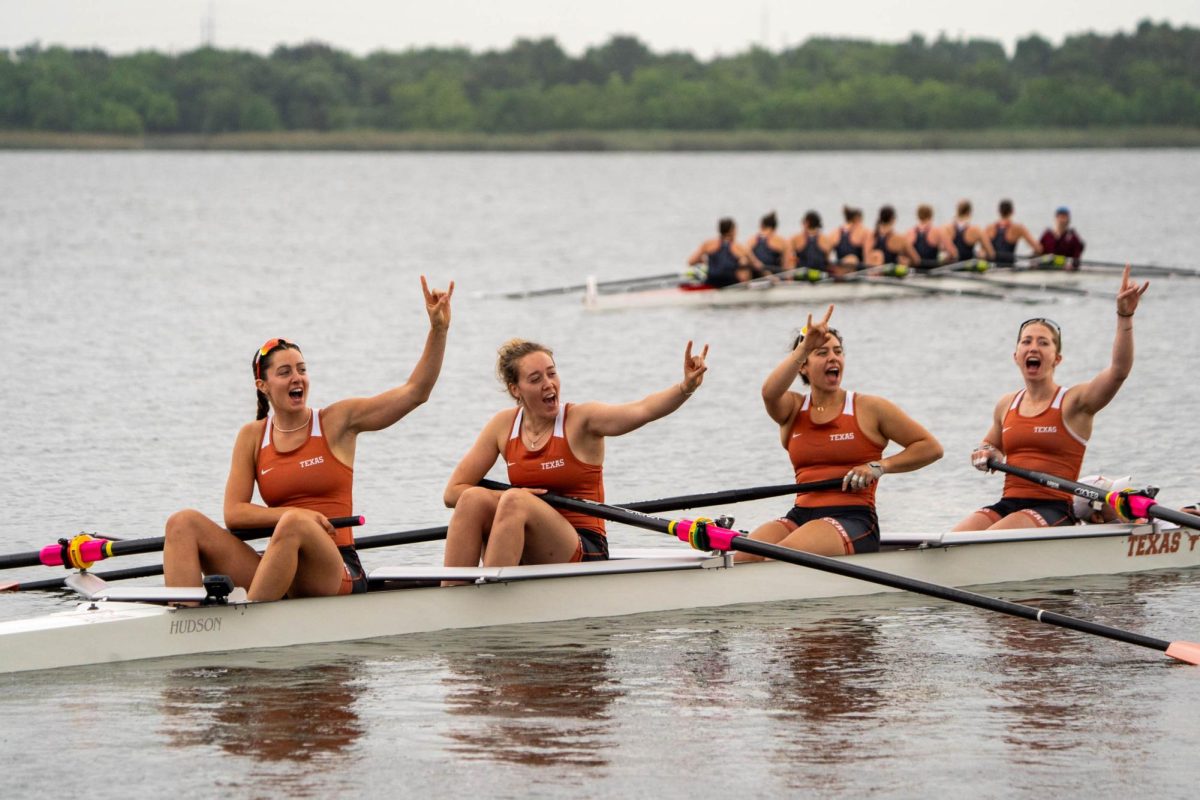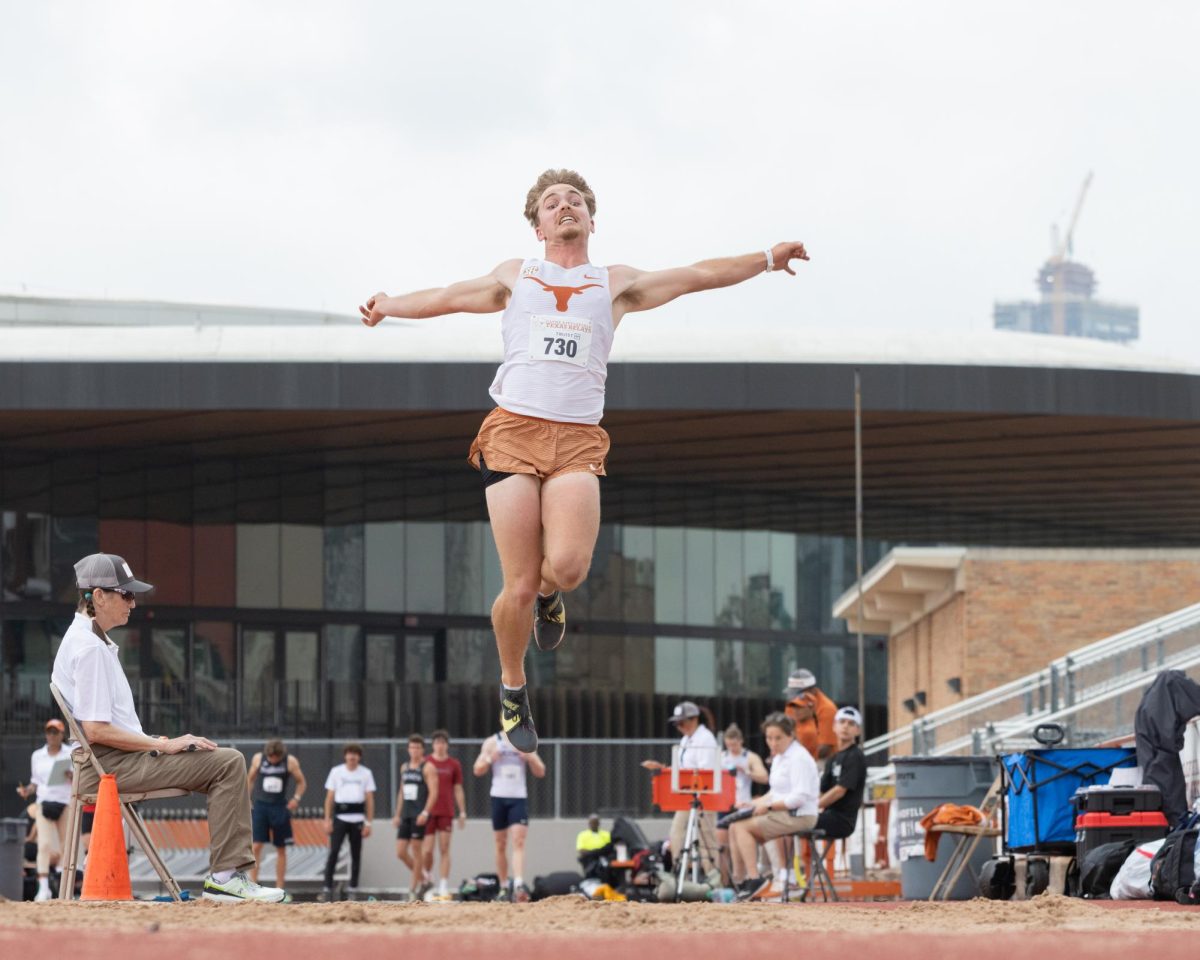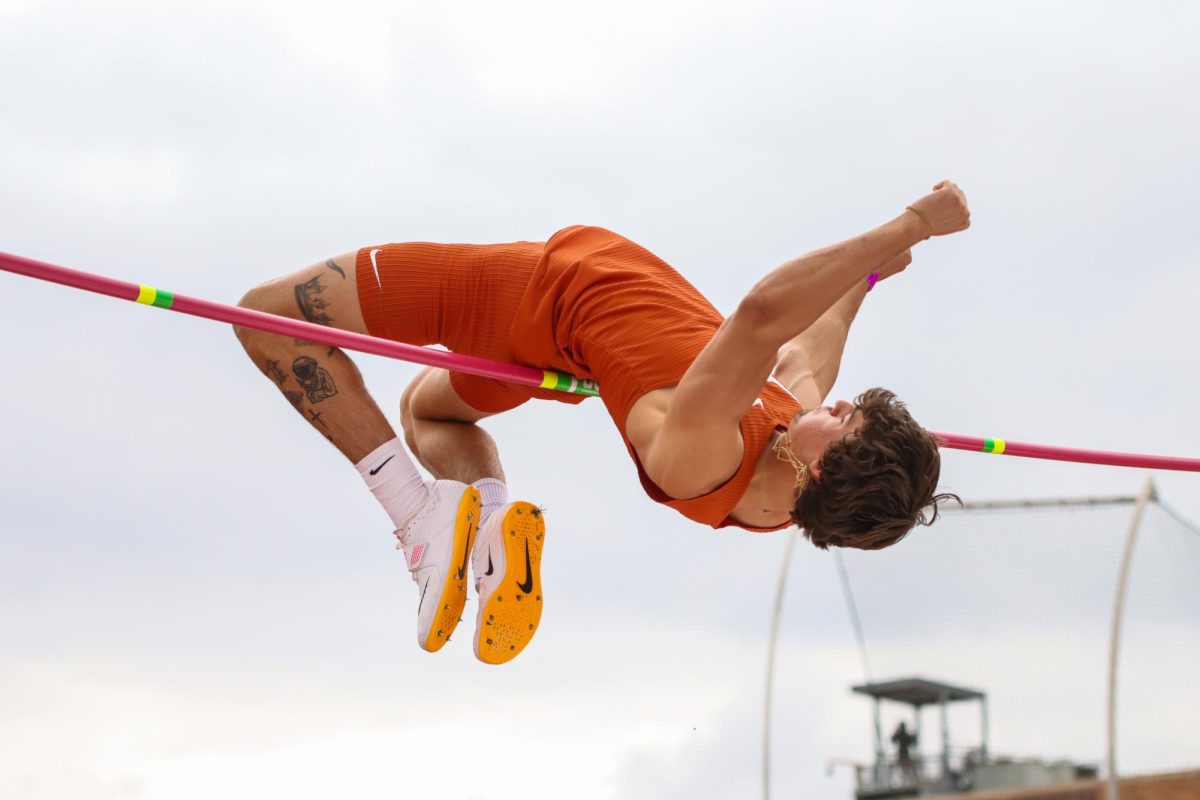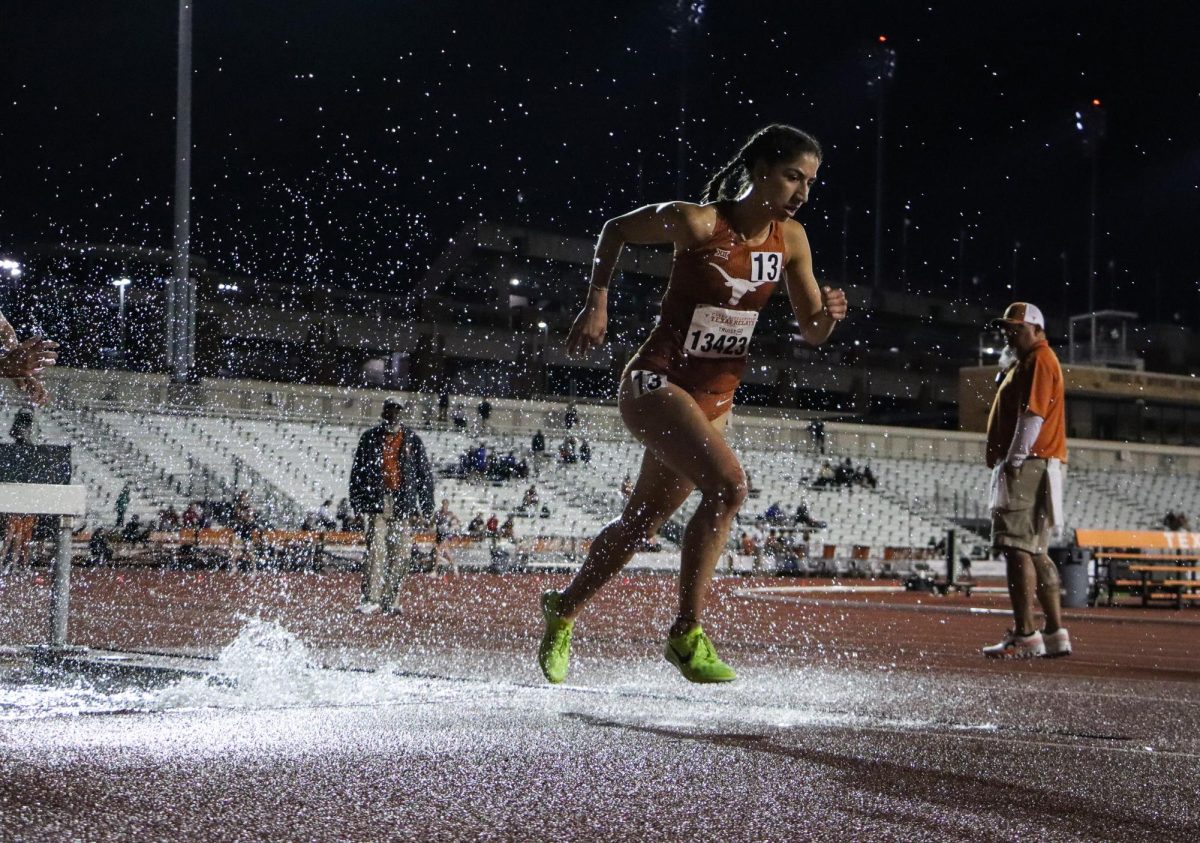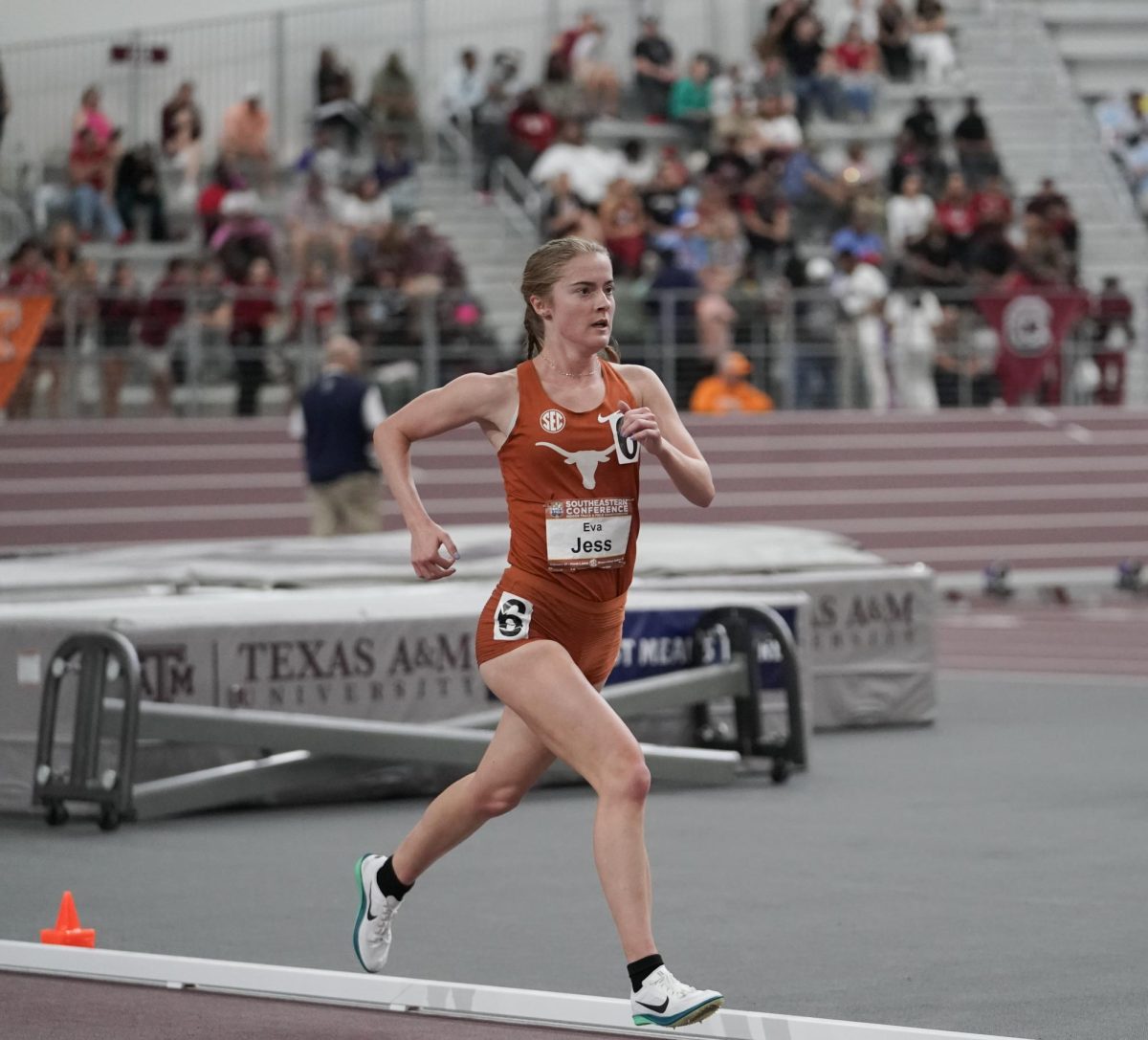For Texas men’s track and field, March is a month of transition, marking the end of the indoor season and the start of the outdoor one.
Outside of senior long jumpers Kelsey Daniel and Solomon Washington, the indoor season ended on March 1 after the Southeastern Conference Indoor Championships. Daniel and Washington represented the Longhorns at the NCAA Indoor Championships on March 14, with Daniel winning the event and Washington finishing eleventh.
For some, the transition to outdoor marks a necessary reset, while for others, keeping momentum is key.
“It really depends on how the (indoor) season went (for an athlete),” head coach Edrick Floréal said. “If the season went really well, then you want to have a continuation of that. If it didn’t go well, then you want to act like it never really happened, and you’re starting back from scratch. So, the mentality and the mindset is different depending on (that).”
The switch is not just a move from indoor facilities to outdoor, but rather a change in the competitive landscape for athletes.
In relation to indoor, some events are adjusted, added or no longer offered. For example, the heptathlon switches to the decathlon. The 4×100-meter relay and 100-meter sprint are added to the mix, while hammer, javelin and discus throw replace the weight throw.
Senior distance runner Nigusom Knight moves to longer races in the outdoor season due to the larger track. While he mostly ran the 3,000-meter indoor, Knight will primarily run the 5,000- and 10,000-meter races during the outdoor campaign.
“The goal now is to build up that endurance aspect of training (and) less focus on speed,” Knight said. “That’s the biggest change. … We run more miles in outdoor on a weekly basis.”
Another shift for the outdoor season happens in the postseason format. While athletes can earn a qualification mark for the indoor national final at any time throughout the regular season and conference championship meet, outdoor qualification features preliminary rounds ahead of the national meet.
Per event, 48 individual athletes and 24 relay teams will be accepted into one of two NCAA Preliminaries, split into the east and west. The top 12 athletes and teams from each regional will advance to the NCAA Outdoor Championships, held in Eugene, Oregon, from June 11 to 14.
Houston’s Kirk Baptiste Invite on March 20 was Texas’s first meet of the outdoor season. It was the beginning of a packed stretch for the Longhorns, with meets scheduled in seven of the following eight weeks. Compared to the indoor season, outdoor’s preliminary format particularly encourages progression.
“Specifically with the indoor season, you’re always looking for that one mark that’s going to send you to (nationals), and that’s what everybody’s going for,” junior high jumper Dylan Lineberger said. “With outdoor, it’s not like that at all. … (Regionals are) where everybody competes, and that’s where you decide who goes to nationals. … So, it just changes the whole dynamic of things, the whole energy.”
The 97th edition of the Texas Relays is underway, running Wednesday through Saturday at Mike A. Myers Stadium. The Relays are the first of two meets held on the Forty Acres during the outdoor season.


